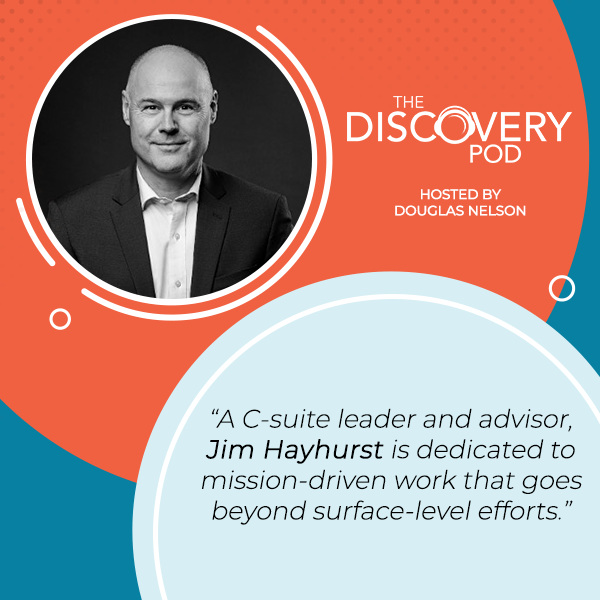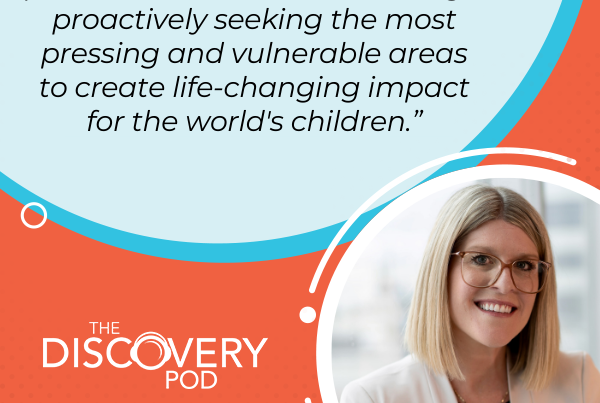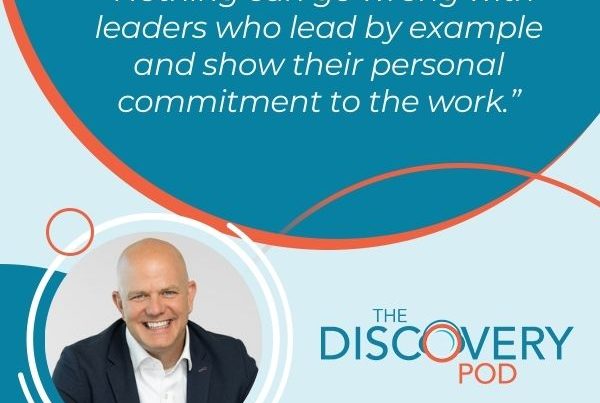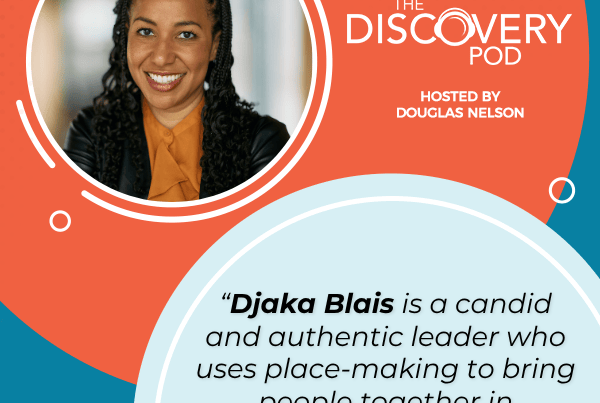
In this episode, Douglas Nelson, host, sits down with Jim Hayhurst, a former CEO, social profit founder, philanthropist, community leader, and advisor to discuss the importance of activating capital for social impact and the need for innovative approaches to philanthropy. Drawing from his experience in both the social profit and tech sectors, Jim highlights the value of embracing failure and normalizing risk when pursuing meaningful change. Jim’s passion for catalyzing positive change shines through, offering inspiration and practical wisdom for us to make a difference in our communities.
—
Listen to the podcast here
Jim Hayhurst, Advisor, Philanthropist, & Founder
Introduction
In this show, we have Jim Hayhurst. Jim is a CEO, nonprofit Founder, community leader, and advisor to impactful organizations. Through his varied career, he has helped start, fund and build innovative companies in Cleantech, software and leadership development with clients and operations on five continents. Relevant to you, our readers, Jim has been an advisor to significant philanthropists, donors, and grantors across the country and is a philanthropist himself.
Our conversation talks about the role of the new movie UnCharitable, which will be streaming on June 15th and is available for everyone to listen to. We talk about the role that scarcity plays in our sector, what we can do to change that, and the role of innovation and opportunity we need to highlight across our social profit sector. This is a great conversation with some actionable tips for how leaders who have social profit organizations can do more to connect with the opportunity and innovation in pursuit of their organizational purpose. Please enjoy my conversation with Jim Hayhurst.
—
Welcome, Jim.
It’s nice to be here. Thanks for having me.
It is excellent to have you on the show. As we were saying before we got rolling, it is a surprise to me at least that our circles have not connected, our paths have not crossed, given the number of people we know in common and the tremendous work that you’ve done from every side of the table in our sectors. We’re looking forward to a great conversation. You have been involved on all sides of the table as a philanthropic advisor, as a donor and philanthropist, founder, former CEO and board member and as a champion for the sector and new ways of looking at the sector. For the few readers who may not be familiar with you, how do you introduce yourself and describe your work for our social profit sector?
How do I introduce myself? For a long time, because my father was also Jim Hayhurst, I was often known as the other Jim Hayhurst, and then that flipped when I started to do more work that was a bit more public-facing and he loved that. I’m now experiencing that with my kids as they’ve entered the workforce, where I will meet people here in Victoria or back in Toronto, where we’re originally from. They’ll say, “Hayhurst, are you related to Tatum, Statin or Quinn? I love to be introduced as the father of these three kids.
That’s the first thing. I’m a dad. I’m a husband. My career has had three arcs to it. I started as a nonprofit leader and founder. I got into the tech sector and the venture world. I’ve come full circle to the meshing of those two things, which is focusing on working a bit more on the philantropreneurism side and how we can activate capital, especially here in Canada, for a greater impact.
To that extent, I’ve been an advisor to a number of companies, nonprofits, and family foundations for a while over the past few years, especially after my tech career. I’m a fan of the sector, and anyone who is excited about seeing how we can impact change in our society is the person I like to work with. Increasingly, I’m working with families in Canada that are looking at philanthropy in a different way, are trying to do it a bit more actively and drive meaning through the wealth that they’ve accumulated in their lifetime. I’ve been an advisor for a few of those families and continue to do some neat work that way.
Discussing The Film On Charitable Perspectives
Anyone who’s been around the sector knows that we need to be staying open to new ways of doing things, new roles for philanthropy to play in fueling the social profit sector. You’ve been sharing the film UnCharitable, Dan Pallotta’s film on new ways of looking at the sector and important new perspectives to share about the sector. What attracted you to that message in the first place, and what did you hear from the donor community as you shared that message?
I’m glad you asked about it. I’m an unpaid fanatic for the movie UnCharitable. Many of us in the social profit sector knew of Dan’s work, probably starting with the TED Talk in 2013 that came out, which was The Way We Think Of Charity Is Dead Wrong. From that, the books. I’ve known Dan and kept in touch with him even as I was outside of the social profit sector as an executive. I was in the tech sector. I think that what resonated for me was specifically in that TED Talk and then obviously with the film that was built around that was this idea of bridging the gap between those two worlds, that the social profit sector was being mistreated and disadvantaged by some of the conditions and rules that we put on it from the for-profit sector.
In my mind, there are many things that are similar that we could learn from each other. In early 2023, I heard through the grapevine that there was a film coming out. I reached out to Dan and the team. They had wrapped the film. They were still editing, and I said, “If there’s anything I can do to help spread the word, especially here in Canada, because it was a US-based film.” I didn’t want us to get overlooked as the “51st state of the United States.” I said, “What can I do?” At that point, I was working with a private family foundation that had the capacity to help bring the message out to others. I went to that foundation’s power to give and said, “Would we back bringing this to Canadian audiences? Do some screenings across Canada.”
The social profit sector was being mistreated and disadvantaged by some of the conditions and rules that we put on it from the for-profit sector. There are so many things that are similar that we could learn from each other. Share on XI come from my dad’s side of the family, we’re an advertising family. We’re very much storytelling in that sense. On my mom’s side of the family, it’s summer camps. Storytelling was a huge part of that as well. Around the camp, the ability to have someone as clear and present as Dan Pallotta explain in a long-form documentary film the challenges the charitable sector has faced and some of the solutions he was proposing. It was exciting to me. I got to know the director, Stephen Gyllenhaal, and became friends with him and said, “This is something that’s going to have a real resonance in the sector.” When we started taking it across Canada and then on my own, I’ve been promoting it and doing Q&As with Dan and Stephen as much as I can at screenings. What I’ve found is that three things happen in the film.
1) Those who show up to it are ready to commit to an hour and a half of listening and watching. That is a huge thing. On this day of the utilization of content, people are saying, “It’s one hour and a half of a documentary sitting in a theater.” I’m like, “Yeah, this deserves your attention.” By people showing up, there’s been a natural filter of people who are ready to engage in the deep tissue work of the film presents. The film is an exploration of the five issues that Dan raises in the TED Talk and we won’t go into each of them, but they’re around the disadvantages that the charitable sector has with regard to things like compensation, things like the ability to spend in marketing and this horrible word of overhead and why the overhead ratio matrix sucks charities into this self-defeating concept of reducing overhead and not hitting impact.
The second thing that surprised me was that immediately in the screenings that we did in Toronto, Calgary, and Vancouver, the very first questions that were asked were not from the social profit leaders in the audience. It was by philanthropists. In fact, in Toronto, one of the dragons from the dragon’s den jumped up and said, “I don’t have a question,” and it was one of those where like, “We’re going to get a treatise. This is a Q&A and they’re not going to have a queue.” He got up and said, “I want to say that I have never been struck by a film. I’ve never had my mind change distinctly from watching a film. This is mind-blowing and I’m grateful and I got a lot to think about in terms of the ideas that were presented in the film.”
That, for me, was a hugely positive thing. The final thing I’ll say about the film is that it’s just a movie and it’s just a start. The next opportunity and obligation that we all have is to turn this movie into a movement to spread the word. For instance, when the film comes out, it’ll be streamable and watchable on Apple, Google and Vimeo. More people will see it, but the real question is what are people doing with it? That’s what I get excited by I’m doing some work with Dan, Stephen and their team on what it means to take a film and turn it into a movement. A little bit like what Al Gore did with Inconvenient Truth many years ago, which is how do you train the trainers? How do you have it be part of a curriculum? Who else needs to see this film that wouldn’t otherwise go to watch it?
There’s so much in that and we’ve often recommended to boards that we’re working with that they watch the 2013 TED Talk to start the conversation and think differently about it than the concept of overhead or cost per dollar raise or cost of raise. All of those calculations embed scarcity in our sector in a way that I think is profoundly unhelpful. It starts with, “How can we be less? How can we apologize first before we do an important socially forward progressive work?” It puts our organization at two steps behind the starting line because of the business model. There’s already a lot of challenges. I’m interested in your perspective. In Canada, we’ve talked a lot about the innovation gap that’s happening in industry and across the country.
Creating Space For Innovation
I see it almost every day, every week that we’re working with a board where they want to say, “We want innovation to be part of our plan. We want innovation in how we do our business, how we serve our clients, and how we raise money. We want that innovation to be at the core of what we do.” In the private sector, you know very well, you can issue equity, take debt, fund growth, and test new ideas without having the dollars in hand. That is not an option, and it will never be an option for the most part of social profit organizations. How can organizations make space for innovation when they can’t go to the debt of the equity markets when they’ve got to break through this scarcity around cost per dollar raised?
It is such a great question. There are functional regulatory and other reasons why the social profit sector is restricted from doing the things and accessing the assets and capital the for-profit sector can hit. I always like to look at what do we have access to in the social profit sector. Let’s not think about what we don’t have. Let’s think of what we do have. That’s the first mind shift, which is sure we can whinge and wring our hands about, “We can’t do this. We can’t do that.” First of all, the fact that throughout this show in your work, you use the phrase social profit as opposed to nonprofit is huge. It’s something I’ve noticed, in fact, in coming to this conversation, I reminded myself that that is a forward-thinking, positive word.
Let's not think about what we don't have. Let's think of what we do have. That's the first mind shift. Share on XDefining yourself by what you are not is probably not a great way to show up to a party if you want to get a date, “Hi, I am not good-looking. I am not wealthy. I am still living in my grandmother’s basement.” You’re not going to get a second date from that. I think that embracing that terminology or whatever people can adopt to think more positively. It’s full of positive psychology stuff and it works. You are what you say you are to the extent that you can occupy the ground that people are thinking about you. In terms of innovation, we’ve talked about this before, but in order to innovate, you have to be willing to fail. You have to take risks and understand when you peel apart what innovation looks like in the private sector. It is taking bets that have more than a better chance of failing than of succeeding.

Philanthropy: To innovate, you have to embrace failure. Innovation in the private sector often involves taking risks on bets that are more likely to fail than succeed.
If you want to normalize innovation, if you want to normalize risk, then you have to normalize failure, not to say you are seeking to fail, but you are seeking to take the chances and the significant risks that have the possibility of failure and you are okay with that. Why? It’s a virtual ground for learning. I get excited when I think about funders, especially those who have made it a priority to allow for the social profits that they fund to take on risk.
I was on a webinar some years ago and we had this conversation with a group of family foundations, significant ones, ones that are boldfaced names in Canada and are understood to be buying into this idea of funding risk and innovation. After someone spoke about how this is a real part of their DNA, that they want their social profits, that they fund their grantees to take risks, I said, “Can you tell me where on your website you highlight the failures? I’m looking at your website and all I see are the successes.”
If you think about that dynamic of a social profit, going to that website and seeing if they want to apply to X, Y, Z foundation and seeing that all they’ve done is celebrate publicly the successes, then it creates this idea that that’s the game. You can only tell them about your successes, creating this vicious cycle of codependency of people telling stories that may or may not be true and that aren’t true. We’re basically reporting on all the things that worked. I’m a huge fan of failure as a teacher. We’ve talked about the fact that here in Victoria, Ian Chisholm from Roy Group, a leadership coaching group, and I have done great work with some social prophets.
In the tech sector, I noticed that we didn’t talk about failure. All we talked about was #KillingIt, hustle culture and stuff, the next round of funding that people got and what their headcount was. We brought something called F Up Nights Victoria, which allowed people to talk about screwing up on stage in front of 300 people, their peers. It was one of the most helpful things for the tech sector. I hope that if the social profit sector is interested in looking at driving innovation and normalizing risk or even understanding the value of risk, we can talk a bit more about the failures.
First of all, thanks for cleaning that up for our readers, the F Up Nights. It was appreciated. I want to go back to the concept of the survivor bias that when we report only on the successes, it creates a special unicorn feel for those who’ve managed to scale the breach and the rest of us are left on the other side without a clear pathway forward. Organizations that have made it, that have been successful, that have innovated a new program or a new way of implementing their purpose, leave out the first three times it didn’t work or the three times they fell on their face. I think that’s true in Canada. The social cost of failure is way too high, and I think it’s even higher in our sector. Going back to the cost of overhead and cost of funds raised, you can’t make mistakes.
My experience as someone who grew up as a fundraiser, particularly in funding research, there were lots of times when donors gave money to support a project that didn’t work. There was a question that was being pursued, thinking that this would be a promising treatment or a promising way of understanding a certain disease or a certain problem. The researchers are like, “That’s not it,” then you go back to the donors. Early on in my career, I was expecting the donors to be upset.
They’d given to something and it hadn’t worked and they’d be grouchy. Every single instance, without exception, in many years of having those conversations, I always heard, “What are you going to do now? What did you learn? What’s next?” I think our donors, the people that fund our sector, have a far greater sense of tolerance of failure and a greater desire for innovation than the organizations themselves. As a sector, we put those restrictions on ourselves and we fail to meet the expectations of our donors on a fairly consistent basis when we’re afraid to make those mistakes.
I couldn’t agree more. One of the things that I recommend to social profit leaders, executive directors, presidents of organizations, and people who are thinking about creating a social profit organization is I say, “Go and learn about the venture capital space. Go and learn about the tech startup space. Go and learn about the place in which we fund failure, fund learning and fund big ideas,” then conversant in the language of that.
Immerse yourself in the world of venture capital, tech startups, and the ecosystem that fosters failure, learning, and big ideas. Then, become fluent in its language. Share on XOne of the reasons that I think I’ve been successful in talking with funders on both sides of the table, both in raising capital for companies and raising capital for social profit organizations, is because I look at them as the same thing. For an early-stage investor in the venture space or an angel investor, all they’re doing is funding the research essentially that is going to prove whether a thesis of an entrepreneur is correct or not, whether a market might even want whatever they’re producing.
They fully expect that that money is not going to come back to them in those early stages. The ratio of success versus failure for early-stage companies is off the charts, tilted towards them, not succeeding, but they get funded again because they’ve learned something. I think that if social profit leaders can look at funders and say, “I understand that in the other world that you live in, your investment portfolio, you have a tolerance for risk and then define who you are as an organization within that spectrum of risk.” Let’s say you’re a large organization that has found its particular market fit. You are a social profit that is delivering incredible programs that have been proven to have a specific outcome and impact. You’re in maintenance mode and continuing to deliver services.
On the investment spectrum, that’s a blue-chip investment. There’s very little risk there. There will be funders who want that. At the other end of the spectrum, there are organizations saying, “We’re going to try something radically different.” It’s going to look and smell different than a lot of the other programs that might be out there. In fact, the charity that our family started was a little bit that it went, and it found a gap in the market. It said, “We would take the risk on this.”
Some you probably know of and others will know of reading this, James Chen from got this Moonshot Philanthropy concept. He’s got a great chart on one of his pages, which I love, which talks about privatizing risk, which is that those early-stage investments in a social profit who have a “crazy idea” that can and should be taken on by those who are aware of what that risk is and that has a good chance of failing.
It’s about identifying what kind of “investor” and philanthropist you’re talking about and where they fit on the spectrum of risk and innovation. Sometimes, where we get into trouble is that we haven’t done that due diligence on who’s ready for the big ask about something that has a good chance of not working but a great chance of learning a lot and moving things forward.
What I would add to that is that often, the same donor can make investments in both places. They want to give to the Blue Chip Community Foundation, which is going to do great work in the community, and they know that’s going to work. They’ll also fund the newer organization with a new way of approaching it. It’s organizations knowing themselves and where they are on the risk spectrum, either for a particular project or their whole organization, that awareness or lack of awareness works against the success of social profits fairly consistently. If they knew what they meant, they knew what they represented in the eyes of potential donors and potential funders, I think they do a much better job of being able to secure those funds to either learn those lessons or do the great work or both.
You decide who you are. Decide what your unique ability is and try not to go outside of that. Having said that, I think within any organization, there’s an opportunity to have those sidecar bets where you’ve got a category of knowledge, reputational equity in the social impact space, data and connections, and then how could you use that to drive some innovation and finding a funder that would say, “I liken it to a guy that I went to school with was one of the early employees at Microsoft.” He came up with the idea of Expedia within Microsoft, but Microsoft didn’t want it there.
They said, “You got to take it outside because that’s not the bet that we make, but we’ll help you fund it outside of that.” It was this sidecar bet which they put a lot of money into, but it was distinct from the current offering that Microsoft had. If you can start to think about that language, “Is this a dividend bet? Is it a safe blue chip thing or is this a more of a venture-style thing?” Understanding the requirements and the characteristics of an organization to deliver on that,
The important theory is to have a truly open conversation with the funder to say, “We are deciding to do this. Let’s remind ourselves what it might mean.” It might mean things going sideways and it might mean a different reporting structure, but setting up the conditions and the rules of engagement with that funder so that they understand, “We’ve made this kind of bet. Therefore, the communication, the risk, and the publicity around this could look this way.” You don’t get caught with your proverbial pants down where someone said, “I thought this was a sure bet,” and it wasn’t.
The temptation for a lot of organizations is to make those risky investments, risky bets look like sure things and feel the need to make it look like a sure thing. We’ve got our act together, we know what’s going to happen, we guarantee. I don’t think donors are always looking for that guarantee. Some in those blue chip investments, yes, and some donors, many donors, are willing to do something a little further out up the risk curve. The organizations that are able to clarify that and be able to present that as a unique offering are going to be able to attract funding and probably a lot more funding than they are for those things they guarantee success at.
Those things where success is guaranteed, that’s where we run into the argument of, “Shouldn’t the government be doing this?” We solve problems in our sector that the government can’t and the private sector hasn’t been able to find the margin to do it. We are left with these guardian knots of social issues that organizations are taking on. When we downplay that and we make it seem straightforward to do the work, I think we do a disservice to our donors, the people we serve and the organizations themselves.
It’s not a rant. It’s more of a truth.
You’ve had this great experience of being a founder, executive director, on boards and an advisor. What advice would you have for leaders of organizations who want to incorporate this concept of innovation into the work of their organization? How do they get started?
Often, there’s this archetype of the entrepreneur, the lone wolf, someone with this internal passion to get something done and this personal sense of urgency. While that might be true in terms of how things get started, I think that if you’re looking to drive innovation and take on a bit more of an entrepreneurial mindset within your organization, the first thing I say to folks is, “Have a team.” I don’t mean your staff, your board or funders necessarily. I’m a huge fan of having a personal advisory board, a group who is there for you to have conversations with that are unfettered by fiduciary or employment responsibility, who can call you on your crap, who you can call with your crap and sometimes often this gets outsourced/insourced to our partners and spouses.
I think that that’s unfair. At times, the true entrepreneurial social impact leader is someone who needs to have a bit of a posse around them that they can go to. The personal advisory board is like a YPO for social impact leaders and social profit leaders, and it is something that I recommend. I was lucky enough to grow up in this sector in Toronto at a time when some remarkable organizations were getting started. One of them is the Evergreen Foundation by Geoff Cape. Jeff was a few years ahead of me and I was soaking up every opportunity I had to have a coffee with him. I could talk to him honestly about boards and chairs, funders, staff problems, “Could this work what I was trying to build?” It was beneficial to have that objective person. The other thing is to remember that collaboration is one of the shortcuts to scaling innovation and impact.
In a variety of sectors, I’ve seen it in the tech sector true degree, but with a scarcity mindset, the greatest thing you can do is look around as to who else is around you that can support you. I love the idea of looking at, especially funding is not a zero-sum game, that you should be letting others know about any conversations you are having with funders that may or may not fit with what you’re doing. That is a gift that comes back to you. When I talk about innovation and taking risks, people are like, “How do we fund that?”
The greatest thing you can do is look around for others who could support you. Share on XI’m like, “There’s money out there. You may not know about it. You find out about it because people are having conversations about what funding is out there.” If there is something that isn’t perfect for you, let’s say you’ve come back from a meeting with a foundation or a grant-giving organization, and you don’t quite fit, please tell other people about it. What that does is it creates this virtuous circle of people sharing where the money is. It’s slightly different, but I remember hearing some years ago about a kid in the US who created a platform to share the scholarships that weren’t being given out. There was something like $30 billion worth of scholarships that weren’t being used in the US. That was simply because people didn’t know about them. I don’t know what the number is for grants that are either not given out or given to not wrong, but they’re jammed into a funding cycle.
I think that there’s a lot of capital that is available that people don’t know about, not treating that capital pool as a zero-sum game, i.e., either I get it or nobody gets it, is important for people to think about. That starts to shift the mindset to abundance from scarcity, which is a tangible way to do that. I have never been anything but well served by sharing ideas, intros, contacts, networks and funders with other social profit leaders. It does two things. It creates a degree of gratitude on the other side. Definitely, it comes back to me in karmic ways. I’ve seen it happen, but I also solve a problem for the funders where they find a great organization they wouldn’t have otherwise seen. I love it when that happens. It’s always come back to us in our charity at Trails and others that I’ve worked with.
Learning From The Social Profit Sector
That’s great advice to do your work out loud. It is an important theme that comes through there. It will come back. Drawing on your 360-degree view of our sector, what would you say the private sector can learn from the work of the social profit sector?
I’ll say this in two ways. The greatest asset that the social profit sector has is a clear sense of why they are in the business. It’s embedded. It’s the raison-detri. It’s there from the very beginning. Sometimes, we depend on that too much, almost to a fault. You can talk about that. Too often, I’ve seen for-profit companies, especially startups, create a solution to a problem that may or may not have existed. More than that, they have not had that moment of clarity where someone has forced them to sit down and say, “Who are we? Why are we the ones to solve this? What is the why that is driving us forward? What is the reason that we should exist?” Eventually, something will go sideways, especially in the tech sector and in the early-stage company space.
A market will disappear. Regulatory changes. Google changes its algorithm, and your business almost disappears overnight, or it has the possibility of disappearing overnight. If you have a why, which is more than just what business you are in, but why you exist, what your reason for creating prosperity with this company is. That carries you through those tough times. It allows you to keep your employees engaged and motivated. It keeps your funders excited about what you’re doing and who you are. In the social profit sector, that is often central, longstanding, and robust. There is a tangible connection to an outcome that is meaningful within the social profit sector and organizations. Not every single one, but the majority have that. It’s interesting that it doesn’t require them to do a lot of strategic thinking. They don’t hire a consultant to come up with it.

Philanthropy: If you have a why that goes beyond just what business you’re in, why you exist, and what your reason for creating prosperity is, that why carries you through those tough times.
It is there. It emanates from the heart. That is a characteristic of entrepreneurs, entrepreneurs that have this inability to not scratch the itch of doing something about a problem that they see in a market or in society. When I’m working with young tech companies, I do three things with them. I ensure that they go through a core values exercise. I don’t allow them to have more than three. The three-legged stool can stand. A six-legged stool is overkill. Nobody remembers the six core values and eventually, they all start sounding the same. Core values being the first exercise, focusing on developing their people, being the second one.
The third one is one that is a little bit unique for me, which as I say, start figuring out how you’re going to give back early when you don’t have time or money or perceived expertise. You’re a young founder. I ask them to do that because it means that when they are successful, they have exercised the muscles of giving back and engaging philanthropically or as volunteers, there’ll be more useful board members on social profit organization boards. They won’t pull that muscle because they’re using it even in a small way early.
Start figuring out how you're going to give back early when you don't have time, money, or perceived expertise. Share on XThe other thing it does is it means that they get to learn from the social profit leaders that they interact with. They see a social profit leader dealing with the scarcity on their side of the table, and suddenly, a young tech entrepreneur who has $1 million in seed funding is like, “We have it pretty good. This is pretty luxurious.” They learn about the alternate ways to motivate teams to connect with the market, which comes down to that. I get excited about that intersection of early-stage company leaders and social profit leaders sharing more. By the way, it’s also not a bad thing for the social profit leaders to make those connections early on because eventually one in 10 or one in 20 is going to have a big exit and you want to be the one that knew them before they were rich.
Using A Magic Wand
That is great advice for early-stage founders, but I think even better, more effective advice for social profit leaders to understand and to put themselves in the shoes of those private sector founders and understand where they’re coming from, it can do nothing but be helpful in terms of conversations with all sorts of funders. I have two more questions for you as we come to the end of our conversation. The first is, our readers can’t see this, but right now, I’m handing you a magic wand. In this magic wand, there is the power to change one thing about the social profit sector. You’ve got to use it right away. What would you use your magic wand to change in the social profit sector?
I would want to see the line item or professional development or true deep tissue work with the leaders to be expanded, to be commensurate with that for directors and officers, liability insurance, rent, postage and all of the other stuff because I’ll say this, you can take away almost any part of a social profit organization, you can take away many things and frankly, the place will still keep going, but it won’t go if people aren’t growing. It won’t go if people aren’t valued and if they’re not learning. I continue to see the underinvestment in professional development. I don’t mean courses on running a nonprofit or charity or the leadership development. I mean the ability to get to a coaching style of leadership, all of that stuff, which seems to be treated by sometimes boards, sometimes funders, but also executives within the social profit sector as a nice to have.
For me it is central. The analogy that I use or the corollary I would use, I go back to the tech sector here in Victoria, I saw that there were many technical founders that were having a real tough time scaling their companies. The main reason it wasn’t that there wasn’t great technology or good product market fit. It was that they didn’t know how to grow their teams, and nobody had ever taught them how to do that. Through our tech association, we ended up investing in a robust, multi-year professional development program for young tech leaders.
In the organization that I had been advising for the past few years, which does significant funding for social profit organizations across Canada, one of the conditions of that funding was that they would have up to $10,000 set aside for professional development for a social impact retreat where they gather together with their cohort in a nice place, by the way, like a beautiful place that was where they would be four days together.
We would say to them, “This is not to be used for anything else. This is the only restricted funding that we’re giving you and it is going to be for professional development because otherwise it’s going to get sucked into something else.” That’s my magic wand. I’d love to see that line item expand. I’d love to see it valued as much as it is within the for-profit sector. I’ve seen organizations like the Power To Give Foundation and others dedicate themselves to seeing that value. I’d love to see it more broad-based.
Looking Forward
What are you looking forward to?
I don’t know when this is going to come out, but I’m looking forward to a Canadian team winning the Stanley Cup. That would be great. That might be a bridge too far, but certainly hoping for it. What I’m looking forward to in the next year or in and ongoing is specifically working with a third-generation family in Canada that is taking a look at setting up what I’m calling a whole human family office that is going to have a significant focus on philanthropy and on connection to community, not simply investing and managing and growing their assets, getting to the why of their giving and helping their family members grow. What I’m seeing is it’ll be a bit of a proxy and a model that I think we can take to not only other families, ultra-high net worth families, but also to communities.
I’m looking forward to reactivating some of the work that my father did on figuring out what you want to do with your life and doing that with these families, but also doing it with nonprofit social profit leaders as well and hopefully having a point at which people who decide to go into the social profit sector don’t seem to be making some big sacrifice. There’s a lot in there that I have to unpack and there’s some stuff that’s still being designed at this stage, but I’m seeing it as a beautiful connection between my work as a social profit founder and leader with Trails Youth Initiatives back many years ago to my work with the tech sector and venture capital to now working with these families.
I get excited about Canada’s role in this. I know Canada’s getting a bad rap internally from ourselves and from various folks about where we are as a country and what our leadership is doing. I maintain a degree of hope and irrational optimism because this is still the greatest country in the world and we need to continue to invest in it in all ways.
Thank you so much for sharing that. I’m excited for what you’re looking forward to. I appreciate you making the time to share the message and the advice that you did with our readers.
I’m super thrilled to be here. I love the work that you guys do. Thanks. This is important stuff. Thanks very much.




